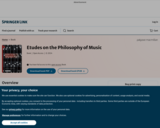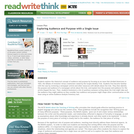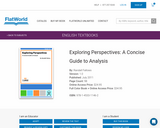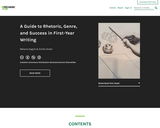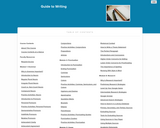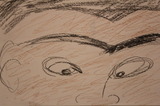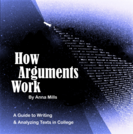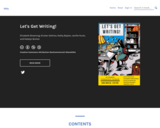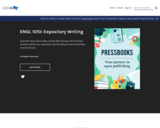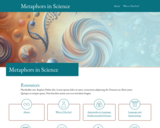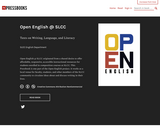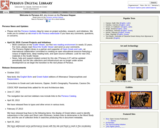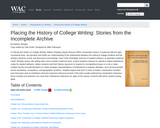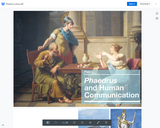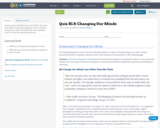Struttura e tradizioneMolto vario è lo schema ritmico del sonetto. Quello originario era composto da rime alterne ABAB ABAB sia nelle quartine che terzine CDC DCD, oppure con tre rime ripetute CDE CDE, o ancora con struttura ABAB ABAB CDC ECE.Quello in vigore nel Dolce stil novo introduceva nelle quartine la rima incrociata: ABBA/ABBA, forma che in seguito ebbe la prevalenza. Il sonetto è pertanto un genere poetico che ha capacità poliedriche e risponde a funzioni diverse.Esempio di sonetto con schema: ABBA - ABBA | CDE - EDC:« Tanto gentile e tanto onesta parela donna mia quand'ella altrui saluta,ch'ogne lingua deven tremando muta,e li occhi non l'ardiscan di guardare.Ella si va, sentendosi laudare,benignamente d'umiltà vestuta;e par che sia una cosa venutada cielo in terra a miracol mostrare.Mostrasi sì piacente a chi la mira,che dà per li occhi una dolcezza al core,che 'ntender no la può chi non la prova:e par che de la sua labbia si movauno spirito soave pien d'amore,che va dicendo a l'anima: Sospira. »(Dante Alighieri)Il sonetto Non è certamente impresa facile, allo stato attuale degli studî, delineare una storia della metrica italiana, poiché all'insufficienza delle ricerche particolari s'aggiunge il carattere puramente descrittivo a cui s'ispira la maggior parte di esse. Fatta eccezione per la poesia dei primi secoli, per la quale il filologo - in virtù della sua preparazione di medievalista e di comparatista - ha potuto investire o additare alcuni dei problemi più importanti della tecnica poetica, soprattutto per quanto riguarda l'origine dei versi, della struttura strofica, delle forme chiuse, risulta in generale che la critica ha trascurato lo studio della metrica da un punto di vista adeguatamente storico, limitandosi soltanto a istituire astratti paradigmi d'indole normativa. Non si può dire che si sia fatto un congruo progresso nel metodo di ricerca rispetto al primo grande tentativo del De vulgari eloquentia dantesco, che per la prima volta nel dominio romanzo riportava l'evoluzione metrica entro al concreto dominio della storia letteraria. Ma alcune delle ragioni che hanno favorito questo ritardo della critica intorno alla tecnica del verso e possono giustificare, almeno in parte, il difetto d'interesse verso siffatti problemi, vanno ricercate nella particolare tradizione della metrica italiana, che conserva, almeno apparentemente, una continuità uniforme nei suoi tipi principali. L'endecasillabo, p. es., che è il verso originario e classico della poesia italiana, ha una storia più omogenea e una portata più estesa di qualsiasi verso romanzo, anche dell'alessandrino francese e dell'ottonario spagnolo. Esso, infatti, non offre, almeno rispetto al quadro ritmico, nessuna sostanziale differenza fra un'epoca letteraria e l'altra e la sua evoluzione ed estensione riguarda, se mai, lo schema strofico in cui si viene a disporre. A determinare questa più rigorosa osservanza del tipo metrico hanno operato le particolari condizioni conservative della lingua letteraria e la maggiore continuità della tradizione poetica, poiché in Italia l'una e l'altra, pur avendo un ricco e operoso svolgimento, non hanno tuttavia subito radicali trasformazioni né mai hanno bruscamente interrotto i legami con il più vicino passato. Mentre il periodo umanistico sembra creare in Francia, e non in Francia soltanto, un profondo distacco dalla cultura, dalla lingua e dalla versificazione dell'epoca medievale, in Italia esso si delinea come maturazione del Trecento, cosicché i tipi ritmici e le forme metriche di cui si riveste il primo fiore della lirica siculo-toscana si continuano con un più squisito perfezionamento nella poesia del Petrarca e si stilizzano più rigidamente con il petrarchismo del Cinquecento; lo stesso Romanticismo, d'altra parte, non portò in Italia, dove l'educazione e il temperamento classici erano profondamente radicati, quella rivoluzione della tecnica poetica e perciò dello strumento metrico che invece si effettuava altrove, anche in paesi di cultura romanza. L'endecasillabo e il sonetto, per esempio, che rappresentano rispettivamente l'unità ritmica e la forma chiusa più schiettamente italiane, non conoscono infedeltà né oblii, da Guittone d'Arezzo al Carducci e all'ultimo D'Annunzio. Nel Duecento, che possiamo considerare come il periodo genetico della versificazione italiana, essa si viene costituendo entro un tipo culturale assai maturo e ricco di esperienze, che aveva già elaborato i proprî schemi e possedeva modelli già conchiusi nelle letterature vicine, la trovatorica-provenzale soprattutto, così che ignorò quasi del tutto quella lenta, oscura e laboriosa epoca di poesia popolare-giullaresca che in altri paesi (Francia e Castiglia) aveva veramente creato la metrica romanza dall'incerta eredità dei "ritmi" bassolatini. L'endecasillabo e il settenario, la canzone, il sonetto, il serventese e la terza rima appartengono a una tradizione che ha ormai superato lo stadio preparatorio; per quanto in Italia si rivelino in parte di nuova formazione e in parte di rinnovato adattamento, essi si presentano subito con una struttura isosillabica e con un quadro ritmico e strofico pienamente regolare e normativo. L'endecasillabo di Dante e più risolutamente quello del Petrarca (che normalizza l'accento sulla sesta a preferenza degli altri, isola la rima, tende a conferire al verso singolo un'unità compiuta in corrispondenza alla frase logica) fissano sostanzialmente gli elementi costitutivi della versificazione italiana in rapporto al genio della lingua.Cosicché è naturale che il verso umanistico non si differenzî gran che dal tipo precedente; succede o prevale, tutt'al più, una forma strofica su un'altra; se la terzina dantesca che pareva perpetuarsi come strumento di poesia narrativa (non se ne sottrasse lo stesso Petrarca che sembrava riluttante alla poesia della Divina Commedia), cade in disuso assieme al contenuto ideale ch'essa traduceva screditata dagli sterili epigoni, tanto che c'è, in pieno Quattrocento, chi la volge a soggetti parodistici e caricaturali (e sopravvive unicamente come metro satirico, né la Basvilliana e la Mascheroniana del Monti possono infonderle nuova vita; se mai ebbe una sporadica ripresa come metro elegiaco col Foscolo, col Leopardi, col Carducci), tuttavia l'endecasillabo continua a mantenersi, anche nel Quattrocento, come verso-base della lirica, e anzi, assieme all'ottava rima, sale ai fastigi della più alta espressione del Rinascimento. Qui è più palese il processo ascensionale dall'ambiente popolare alla poesia d'arte, dai cantari al poema del Pulci, del Boiardo, dell'Ariosto. Anzi il Quattrocento, specie quello toscano e più propriamente fiorentino, rappresenta, rispetto al Trecento, una più larga assimilazione dei metri popolari con un tipo di cultura più agile e più permeabile: è il secolo in cui spesseggiano la ballata, la lauda, il canto carnascialesco, la frottola, il madrigale, lo strambotto, il rispetto, ecc. E tuttavia l'endecasillabo rimane lo schema fondamentale del ritmo italiano; trapassa a una forma culturale diversa, ma il quadro interno resta quasi immutato: ed è sintomatico il fatto che durante le numerose e aspre polemiche linguistiche del Cinquecento che traducevano la crisi della lingua letteraria, non sia mai sorta una vera e propria questione metrica. Anzi nell'età del Bembo si ha una maggiore stilizzazione del verso petrarchesco, che finisce col determinare - e non soltanto nel campo della pura lirica - una volontà di rinnovamento in seno alla versificazione.Ma i tentativi di riforma promossi dal Trissino, dall'Alamanni, da Bernardo Tasso, da Claudio Tolomei (sono del 1539 le sue Regole della nuova poesia toscana), se rinsanguarono la lirica di nuove forme strofiche sulla falsa traccia dell'antico (ode pindarica, ode oraziana, e più tardi la canzone libera, ecc.; già l'Ariosto nelle sue commedie aveva tentato di rendere il trimetro giambico dei comici latini con l'uscita sdrucciola dell'endecasillabo), rappresentano comunque un fallimento e documentano ancora una volta il carattere insostituibile dei metri tradizionali. Rimase acquisita l'introduzione dell'endecasillabo sciolto, che, sebbene presentato in opere di scarso valore estetico (per la prima volta dal Trissino nell'Italia liberata dai Goti e nellaSofonisba: né può considerarsi un precedente storico il verso del dugentesco Mare amoroso), era destinato a rinnovare la vitalità del grande verso italiano, divenendo strumento agile e duttile nel riprodurre il verso eroico dell'antichità o il metro narrativo di altre letterature, nel rendere l'andatura prosastica e descrittiva del poema didascalico o l'agitata animazione della tragedia, fino a dare il tono alla nuova poesia moderna, ad opera del Parini, dell'Alfieri, del Foscolo, del Leopardi, del Carducci, ecc.Ma, intanto, nella lirica del Seicento e di più nell'Arcadia, il verso sembra disarticolarsi per il prevalere di movimenti più strettamente musicali e canori, che operano in seno alla versificazione una vera e propria dislocazione ritmica. Col Marino e i marinisti si trasmette ancora l'endecasillabo, soprattutto nella forma del sonetto e dell'ottava, ché, nonostante la pretesa originalità del secolo, dietro alla proclamata novità del concettismo, si palesa un tardo e degenere petrarchismo, che porta con sé i consueti schemi metrici. Ma tanto il verso, quanto la forma strofica - anche se l'uno si distende su undici sillabe e l'altra ha l'ampiezza del sonetto, della terzina e perfino dell'ottava - tendono a frangersi in brevi ritmi, piuttosto da canzonetta; sono prossimi nella loro sostanza poetica ai metri più corti, specie al settenario, che in quest'epoca si fa sempre più invadente e predominante, con un andamento cantabile. Di questo procedimento che spezza la struttura del verso in brevi emistichî di ritmo eguale, facile e orecchiabile, divenne maestra l'Arcadia: la canzonetta, l'anacreontica, l'odicina, le costruzioni polimetriche a tempo di ballabile, la canzone libera affine al recitativo del dramma pastorale, trovarono il loro estremo sviluppo nel Sei e Settecento pastorali e melodrammatici.Il rinnovamento poetico della seconda metà del Settecento doveva effettuarsi attraverso l'endecasillabo, col ripristino del suo ritmo ampio, composto, profondamente plastico, libero perfino dal limite della rima; e in endecasillabi sono le opere più significative: le tragedie dell'Alfieri, il Giorno del Parini, i Sepolcri del Foscolo, tanta parte della libera poesia del Leopardi, la cui metrica è forse - al pari della sua arte - la più nuova e originale. Con lui la versificazione si fa più strettamente individuale e più squisitamente "moderna", e i grandi poeti che gli succedettero - Carducci, Pascoli, D'Annunzio - si sono creati a volta a volta una loro tecnica metrica, non sempre riducibile a schemi più o meno tradizionali.Certo il Carducci ebbe il merito grande d'interessare più largamente alle questioni metriche, anche se la sua versificazione "barbara" (v. appresso) non riuscì nel suo complesso a far dimenticare i metri della tradizione, che finirono sempre col prevalere; ma senza di lui e senza la sensibilità per il puro ritmo da lui suscitata, forse il Pascoli non avrebbe potuto creare con piena e raffinata coscienza quella sua metrica personalissima, veramente innovatrice, né sarebbero state possibili le modernissime aspirazioni a spiritualizzare la parola in varietà di valori fonici, cioè di ritmi e di metri. Rispetto al Pascoli, il D'Annunzio costituisce anzi una remora, adagiandosi nelle vecchie forme della lirica, con un gusto tra l'archeologico e il preziosista. In questo periodo, del resto, anche in corrispondenza al movimento simbolista della Francia, la poesia entrava nella sua più acuta crisi, ché, abbandonata la disciplina del verso tradizionale, non riusciva a sostituire nuovi tipi, che non fossero già consumati o non portassero la nostalgia del verso classico. Il prevalere della letteratura in prosa, la disarticolazione delle forme metriche nella ricerca del "verso libero", il disinteresse teorico della critica idealistica verso la poesia "tipografica", hanno disintegrato le forme e i valori della pura versificazione.Bibl.: F. D'Ovidio, Versificazione italiana e arte poetica medievale, Milano 1910; id., Versificazione romanza, Napoli 1932. Ormai invecchiati i lavori di F. Zambaldi, Il ritmo dei versi italiani, Torino 1874, e di G. Fraccaroli, D'una teoria razionale di metrica italiana, Torino 1887. Buono ancora come manuale scolastico descrittivo il vol. di P. E. Guarnerio, Manuale di versificazione italiana, Milano 1893; astratto e meccanico il saggio di A. Levi, Della versificazione italiana, in Archivum Romanicum, XIV (1930), pp. 449-526. Forse le osservazioni migliori vanno ricercate in margine alla critica d'arte, per cui si rimanda alla bibl. dei singoli poeti. Cfr. inoltre, qui appresso, la bibl. relativa alla metrica barbara.
